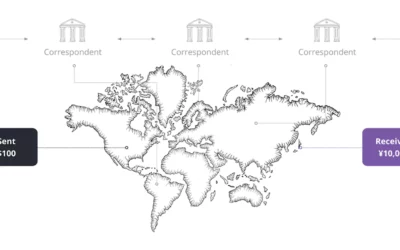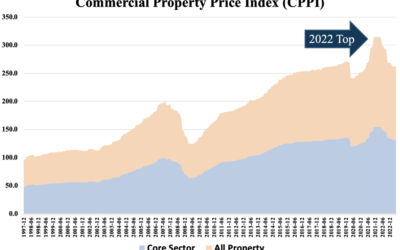The article, sourced from an original PDF found at the bottom of the page, presents a compelling collaboration between Black Mountain Partners, Kyle Niedzwiecki, Elijah Levine, and Eric Swartz, our esteemed Chief Compliance Officer and General Counsel. With a specific focus on memecoin offerings, the authors delve into the intricacies of a US law compliant, non-security token issuance framework. Drawing upon their collective expertise, the article provides an in-depth exploration of this innovative approach, addressing key aspects such as legal considerations, regulatory compliance, and the historical and future potential impact that memecoins have had and will have on the cryptocurrency market. By amalgamating their diverse perspectives, the authors offer readers a comprehensive and insightful analysis of the subject matter, enabling a better understanding of the evolving landscape surrounding memecoin offerings.
Memecoins such as Dogecoin, Shiba Inu and PEPE have gained significant popularity in recent years and will likely gain even more traction in the future. Dogecoin took well over 2,500 days to reach $1 billion in market cap even with Elon Musk on the board and rumors about it becoming the currency of Twitter. Shiba Inu, on the other hand, gained the $1 billion valuation in less than half the time it took Dogecoin to, in 279 days. For reference, it took Bitcoin 1,579 days to reach the $1 billion valuation mark and Ethereum around the same time as Shiba Inu, 287 days.
PEPE found itself sitting over a $1 billion valuation in only 19 days from launch. Where is all this money coming from?
These assets are often created as a parody or satire of established web3 assets like Bitcoin or Ethereum and are characterized by their humorous or meme-inspired themes. A memecoin’s value is primarily driven by market demand and speculation, which draws interest primarily from retailers. That being said, while memecoins can exhibit speculative trading activity and volatile price movements, it’s important to recognize that memecoins also definitionally exhibit characteristics that are inconsistent with the classification of a security under historical and current US federal securities laws.
Some memecoins may have limited utility within their respective ecosystems.1 However, as we discuss in further detail below, the presence of a use case or functionality alone does not classify an asset as a security under existing US federal regulatory frameworks.
The term “security” means any note, stock, treasury stock, security future, security- based swap, bond, debenture, evidence of indebtedness, certificate of interest or participation in any profit-sharing agreement, collateral-trust certificate, preorganization certificate or subscription, transferable share, investment contract, voting-trust certificate, certificate of deposit for a security, fractional undivided interest in oil, gas, or other mineral rights, any put, call, straddle, option, or privilege on any security, certificate of deposit, or group or index of securities (including any interest therein or based on the value thereof), or any put, call, straddle, option, or privilege entered into on a national securities exchange relating to foreign currency, or, in general, any interest or instrument commonly known as a “security”, or any certificate of interest or participation in, temporary or interim certificate for, receipt for, guarantee of, or warrant or right to subscribe to or purchase, any of the foregoing.”
A memecoin isn’t any of the traditional financial products listed in the above definition of a “Security” under US federal securities laws.
Memecoins aren’t equity securities because the ownership of a memecoin doesn’t correspond with ownership in an entity or a share of the profits or revenues of a business venture.
Absent staking, memecoins aren’t debt securities because they don’t provide any sort of yield on a borrowed asset.
Memecoins aren’t transferable shares because memecoins do not represent a share in anything or a right to anything, except perhaps managerial governance powers typically performed and determined by officers (i.e., senior executive operators) of a business.
The difference is that in the case of memecoins there are no equity holders or equity-like governance rights; governance rights are limited to software development and related ecosystem- development activities.
That leaves us to consider whether memecoins are investment contracts…
The US Supreme Court’s Howey case and subsequent case law found that an “investment contract” exists when there is an investment of money in a common enterprise with a reasonable expectation of profits to be derived from the efforts of others.
Memecoins do not offer any guaranteed returns or promise financial gains to their holders. The value of memecoins is primarily derived from speculative trading and the collective sentiment of the market.
Further, memecoin offerors and promoters typically do not make any promise of a future business or individuals who will conduct that business. For example, before Elon Musk took Twitter private, executives would guide public analysts related to future earnings, revenue, plans, etc. Elon is still updating us about features, but with the finances less transparent and accessible to the public, it doesn’t matter as much. In the world of memecoins, even though there is a public market, there are no executives guiding future value, revenue, earnings or anything else. This is because when people buy memecoins, they don’t think that the asset holds any intrinsic value, and it doesn’t, which is why they can’t and shouldn’t be deemed securities.
In fact, assume that the documentation for a memecoin offering explicitly states that (i) purchasers should not expect to profit or generate a return through receipt/ownership of the applicable fungible tokens, (ii) no one currently intends to exert any effort or provide any assistance in bringing about a profit or return for holders of such tokens and (iii) purchasers are virtually assured to lose all money used to purchase such tokens. In such circumstances, it would be very difficult for a court to find that the reasonable expectation of profits to be derived from the efforts of others portion of the Howey test was satisfied because the foregoing eliminates any reasonable expectation of profit that an investor could have.
However, an asset that doesn’t constitute an investment contract under the related offering documentation may still constitute an investment contract if it is advertised as such by its promoters. Let’s assume that our memecoin offerors and promoters go through great pains to make no promise of accretion, future utility or a management team.
In fact, let’s imagine that they include (in all their marketing and advertising channels) that the memecoin won’t help anyone get rich enough to purchase a Lambo and the memecoin isn’t backed by a management team. In that case, there is a significant probability that the memecoin will not constitute an investment contract and therefore does not constitute a security under applicable US federal securities laws. In order for an asset to be considered a security, it must meet all of the requirements of the Howey test.
Now you may be saying to yourself – Sure, but what help is that? We’ve created a useless asset that no rational purchaser will ever buy or get any use out of. Taking into account only the parameters described thus far, you are correct.
Now consider a decentralized autonomous organization (“DAO”) is created alongside a memecoin with a legal wrapper and governance powers that are handed over to the community.
If the DAO then elects to adopt utilities, it would be very difficult for a court to find that, in doing so, the community is relying on the efforts of others. So long as (collectively or separately), the memecoin offerors, promoters and any pre-public market investors don’t control the vote via their token ownership (recent proposed US federal legislation included a 20% control threshold in a similar context).
We recognize that a court could decide to exercise its equitable powers to find that certain memecoins do in fact constitute securities. In that case, we would urge the industry to take a stand, as we are attempting to do here, against such overly aggressive assertions. We believe that, if memecoin offerors/promoters follow proper protocols in outlining expectations to potential purchasers, memecoins should be analyzed using the consistent/accurate interpretation of applicable US federal law outlined in this article.
Now we have arrived at the core lesson – It is possible and permisble under applicable US federal law to issue a fungible token that can include utility (but no expected future value) as a non-security to retailers.
It is essential for individuals to understand the risks associated with memecoins and exercise caution when participating in the volatile memecoin market. You should conduct your own research and let us know what you learn. We welcome all feedback, criticism and any additional thoughts or comments from peers, competitors, friends, enemies, regulators, and anybody in between. The future of web3 is in our hands!





0 Comments